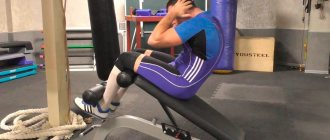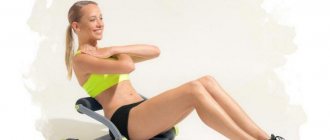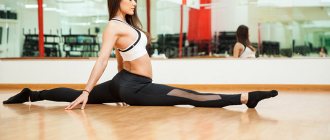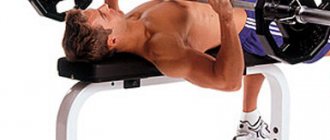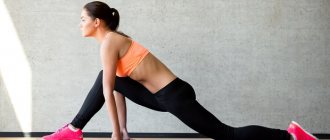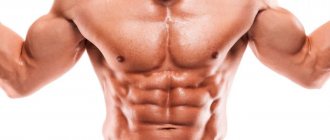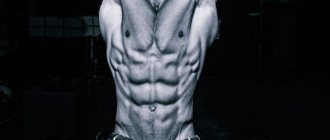Anyone who exercises at home eventually begins to realize that certain elements of the gym are missing for greater productivity. The convenient thing is that now, thanks to specialized offline and online stores, you can set up a real gym at home.
One of these necessary and useful items is a bench. Why is it needed:
- You can perform more different abdominal crunches on it.
- Allows you to perform all types of hyperextension for the lower back more efficiently.
- You can do push-ups from the bench and pump up your triceps. In order to complicate the exercises, you can do push-ups from the floor and put your feet on the bench.
- Using a bench, they do leg swings to the side, Bulgarian squats, and various pelvic lifts. That is, they strengthen the legs.
- The bench is great for performing bench presses, dumbbell raises and raises, and other exercises for all pectoral muscle groups.
Is an ab bench necessary in your home equipment?
This sports equipment cannot be called essential equipment. However, with the help of a press bench you can carry out training technically correctly and comfortably.
If you only want to pump up your abs, then it is not necessary to use a bench for this. At home, you can properly work your abdominal muscles without the help of equipment, for example, by doing leg raises and straight crunches. Such exercises should be performed simply while lying on the floor, without using additional equipment.
However, there are exercises that can be done correctly using fitness equipment. Thus, it is very difficult to perform flyovers, pullovers, barbell or dumbbell presses without a bench. In any case, you will have to use some auxiliary items. This will lead to technically incorrect execution of the exercises, which will significantly reduce the effectiveness of the training, or create a greater likelihood of injury during the training process.
It is likely that it will not be possible to build a stable and safe structure from the items available in the house. The bench will give you the opportunity to do exercises with minimal equipment for various muscle groups. The trainee will also be able to control his movements, which will make the exercises safer, and the training more convenient and effective.
General information
This type of sports equipment is a stable bench, produced in several versions:
- Horizontal fixed
- Inclined fixed
- Adjustable
Fixed benches greatly limit the choice of exercises for an athlete, since a constant angle of inclination does not allow working different parts of the muscles and shifting emphasis. Much more convenient and versatile in this regard are adjustable models, which provide many times more opportunities for training. In addition, benches can have one or more adjustable parts and be equipped with additional elements: retractable telescopic racks for a barbell, a support cushion or safety stops. The more complex the design, the more functional and convenient the bench press.
Types of press benches
There are only four types of abdominal benches, but each of them has certain distinctive features:
- Adjustable ones are the most popular solutions, as they allow you to change the angle of the backrest. With their help, it is comfortable to perform various exercises, work your back and abs from different angles, thus changing the load and placing emphasis on certain areas of the muscles.
- With a reverse backrest angle - models for more experienced athletes. The disadvantage of such solutions is the inability to perform a large number of exercises.
- Folding – suitable for use in small living spaces. The disadvantage of folding benches is their relatively weak design.
- With a curved back - designed for athletes who have problems in the lower part of the spine. They have less functionality.
5 Best Bench Exercises for Abs
You can do a huge number of exercises on an abdominal bench. On some models you can even perform hyperextension.
We have compiled a list of the 5 most effective exercises that can be done on most ab benches.
1. Leg raise
- Lie down on the bench so that your head is near the fixing rollers and your pelvis is on the edge of the bench.
- Hold the edges of the bench or bolsters with your hands.
- The initial position of the legs is vertical, the lower back is pressed against the bench, thanks to the tension of the abdominal muscles.
- As you inhale, lower your legs until they are parallel to the floor.
- As you exhale, return your legs to their original position.
To simplify the technique of performing the exercise, do it at half amplitude or lower your legs one at a time.
2. Reverse push-ups
Reverse push-ups work the triceps and pectoral muscles without using weights.
- Turn your back to the bench, place your palms under your shoulders on its edge, and your torso closer to the edge.
- Straighten your legs in front of you, rest on your heels.
- As you inhale, bend your elbows to a right angle, while lowering your pelvis lower to the floor.
- As you exhale, fully extend your elbows using the strength of your triceps.
If you find it difficult to do reverse push-ups at first, try bending your knees. To make push-ups more difficult, use an additional elevation for your legs or weights (weighted disc or barbell).
On the bench you can do classic push-ups on a hill, placing your hands on it. Another option is to put your feet up and do push-ups, doing negative incline training.
3. Crunches
Place your legs between the fixation rollers and take a lying position.
- Lift up to your knees by contracting your abdominal muscles.
- Keep your back round throughout the entire range of motion.
- Place your hands behind your head or press them to your chest.
- If desired, use additional weights - a ball, a weighted disk, dumbbells.
- Make an upward movement as you exhale.
You can also perform oblique crunches. To do this, you need to add a rotation of the body in the middle of the amplitude.
4. Dumbbell Bench Press
The dumbbell press can be done at different angles. Below we have described a variant of the horizontal press.
- Place the bench in a horizontal position.
- Lie down on a bench, fix your legs on bolsters or rest them on the floor.
- Hold dumbbells at your shoulder joints. Elbows should point down.
- As you exhale, straighten your elbows, thereby pushing the dumbbells up.
- During the press, the chest should be open and the shoulders should be straightened.
It is possible to perform bench presses with a barbell, but this will require racks or a partner. You can also do dumbbell flyes while lying down.
5. Stepping
Walking allows you to work the muscles of your legs and buttocks. They can be performed either without or with weights (dumbbells or leg weights).
- Stand facing the bench, take a step and place your foot on it.
- As you exhale, straighten your knee and rise onto the bench, placing your other leg.
- Next, in the reverse order, while inhaling, place your feet on the floor.
- Alternate your leg movements.
Advantages
Exercises on an abdominal bench are much more convenient to perform than without one. Comfortable footrests, a soft surface and reliable fastenings allow you to escape from all the unnecessary problems associated with hard work.
In addition, it allows you to increase the amplitude of movement, due to which the athlete’s speed of progress noticeably increases.
It allows you to change the working angle, which allows experienced athletes to increase the load on the required area.
A comfortable surface and pressure evenly distributed on joints, tissues and bones saves the practitioner from calluses and various injuries.
There are many models of folding abdominal benches. They can be conveniently located even in small apartments, and, if necessary, deployed.
On some specimens, a design feature allows for unconventional movements, making it possible to work with different areas of the abdominal muscles.
The simplicity of the design will not cause problems with use even for beginners in heavy sports. There are no small parts, the loss of which would disable it.
Thanks to this, the projectile can serve for several decades. In old gyms you can find samples that were used to train back in Soviet times.
If you wish, you can make a press bench with your own hands. To do this, you will need a set of pipes, a backrest that can be made from old furniture, and a welding machine.
Tips for training on the ab bench
- Before training on the bench, be sure to warm up.
- Work on the abdominal bench not only your abdominal muscles, but also other muscle groups. A set of workouts may include exercises for the chest, deltoids, back and legs.
- If you do not use weights, then the exercises should be performed in 3-4 approaches within 20-30 repetitions. With the help of such exercises you can improve the aesthetics of your muscles.
- To increase muscle volume, you definitely need to use additional equipment. In this case, the number of repetitions of exercises should be reduced to 10-12.
Preparation of the drawing
The dimensions of the bench must meet individual requirements. To do this, you can use the standard parameters:
- the length of the supports is 97–122 cm;
- distance between racks - 52 cm;
- the height of the front part of the bench is 83 cm, the back part is 34 cm;
- the parameters of the stand for the rear supports are 30 cm, for the front ones – 22 cm.
The length of the adjustable design in the back reaches 16 cm, in the front - 94 cm. The inclined bench for bench press has other parameters: in the back - 36 cm, in the front - 114 cm. The width of the bench depends on the athlete’s build and the area of the room, in where the simulator will be located. On average, the dimensions reach 29–32 cm. Experts do not recommend using smaller sizes than standard ones, since this can negatively affect the activity of the muscular system, and therefore the result of the workout.
The distance from the floor to the bench should correspond to the parameters of the lower arm of the lever intended for the legs; an additional 10 cm is added. The length of the lounger is selected depending on the height of the athlete.
You can draw up drawings yourself or find ready-made ones in the public domain. The sketch should display all the design features of the future product and the dimensions of each element. If necessary, the initial parameters are changed in accordance with individual requirements. Athletes who go to the gym and work out on professional equipment will be able to take measurements and develop their own scheme based on them.
Criteria for choosing a bench for a bath, recommendations for processing and care
